If you harvest your own prickly ash berries (Xanthoxylum/Szechuan peppercorns) homemade Sichuan sausage should be on your list of things to make.
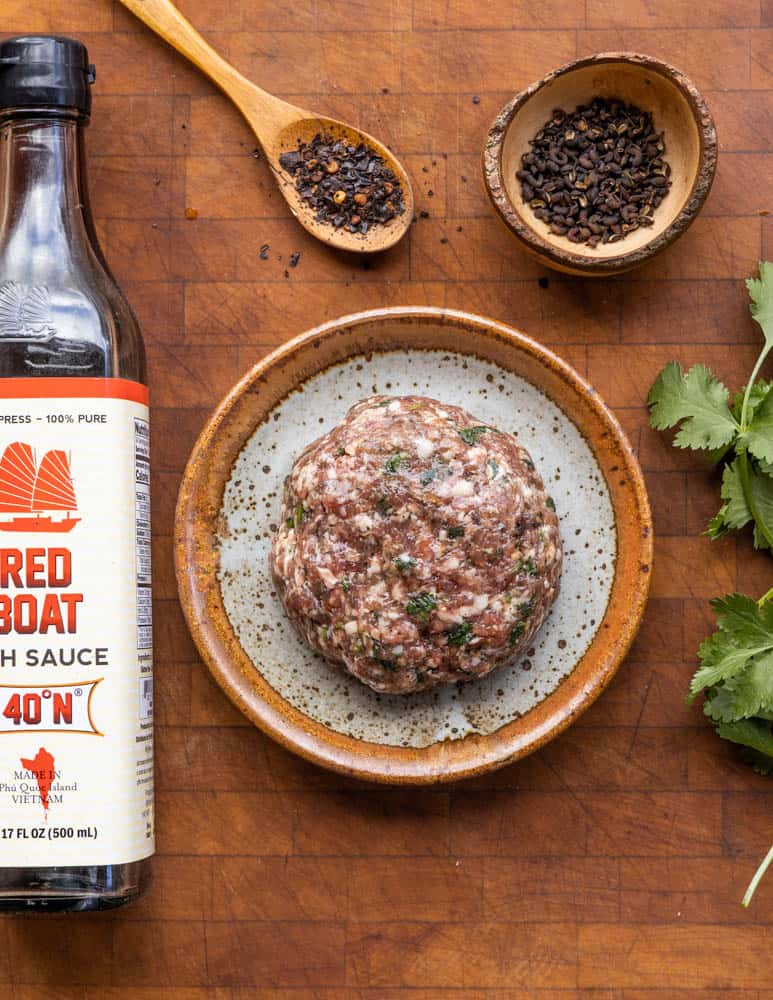
I love the bright, citrusy flavor and gentle numbing quality that prickly ash adds to a dish, but it can be difficult to incorporate them into foods and have them taste coherent if you're not versed in how the spice is traditionally used in Chinese and Japanese cuisine (I'm not an expert by any means).
Sausage is a nice blank canvas though, and the recipe here is another good example of how you can steer flavors in a direction that will make sense on your palette.
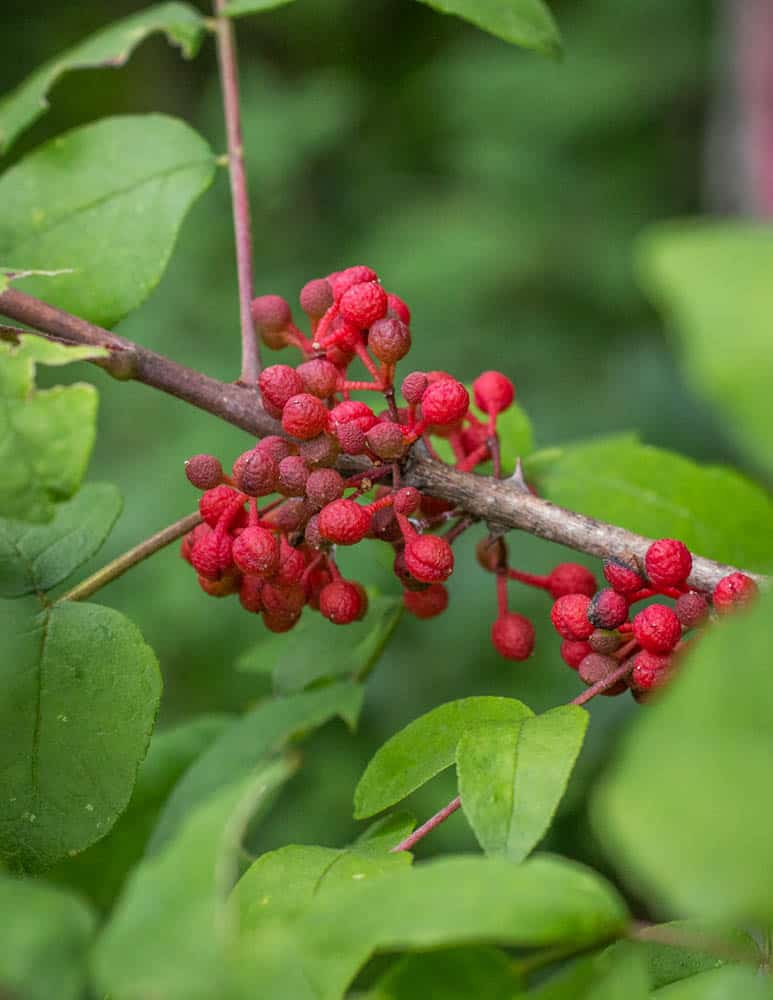
DIY prickly Ash vs Commercial
Dried wild prickly ash is a little different than the dried Szechuan peppercorns you might buy in a store. My jars of wild prickly ash are usually brown to black in color after drying, since I wait for the husk to dry on the plant which allows the gritty black seed to fall out, doing the work of winnowing and separating the seeds from the husk for me.
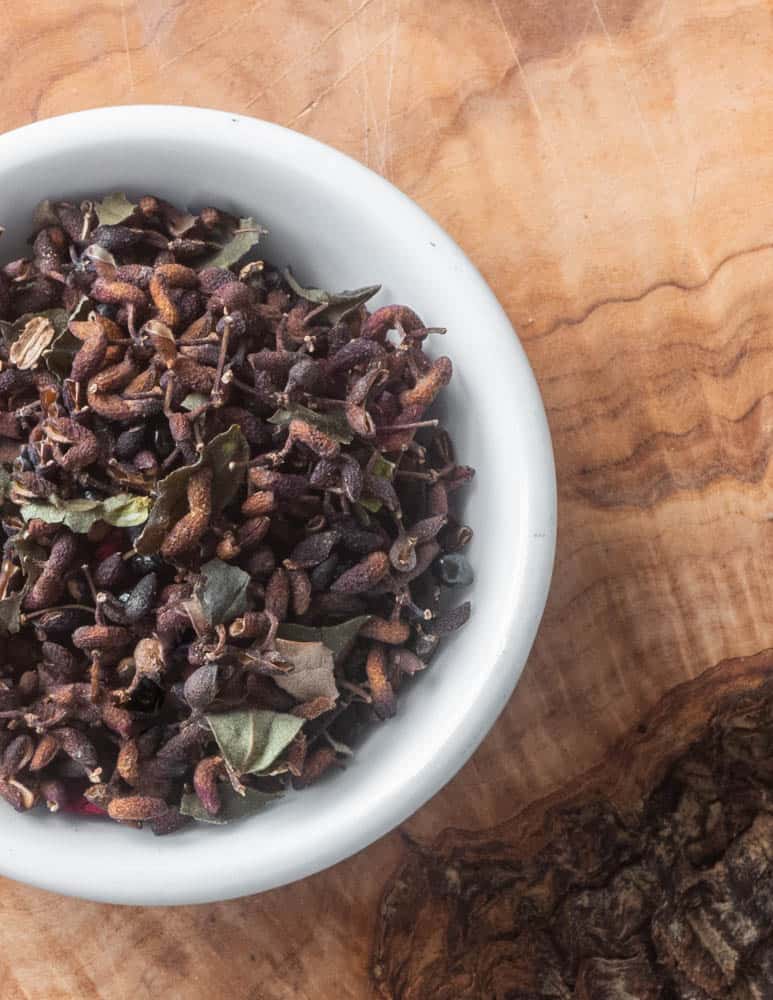
The flavor is a bit more muted than commercial Szechuan peppercorns that are often harvested while they're still red (they're harvested green as well for other products).
Since dried, crunchy black seed husks don't make for the most exciting mouthfeel, I take a cue from Chinese cuisine and often grind my dried prickly ash into powder in a spice grinder before using it, which releases the aroma, and transforms it into a rough powder that won't add any noticeable texture to the finished product.
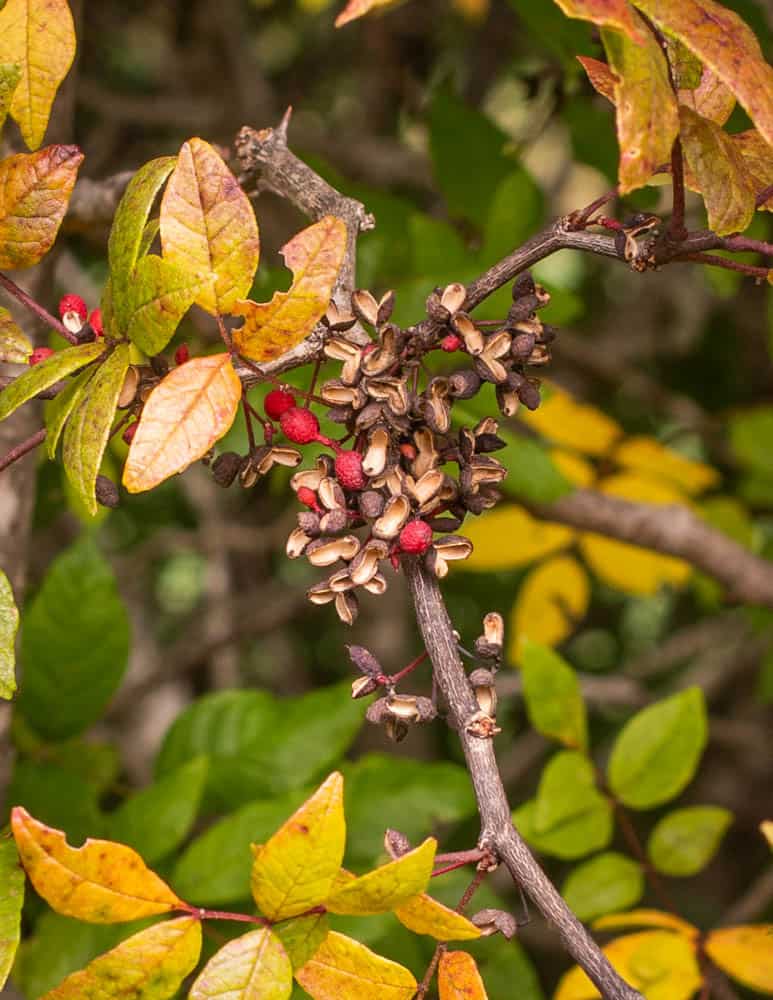
As for the sausage itself, it's easy—no casing and meat stuffer required, meaning that it's great for stuffing into wonton wrappers and making dumplings, or just frying up as is and adding to stir fry or a bowl of noodle soup.
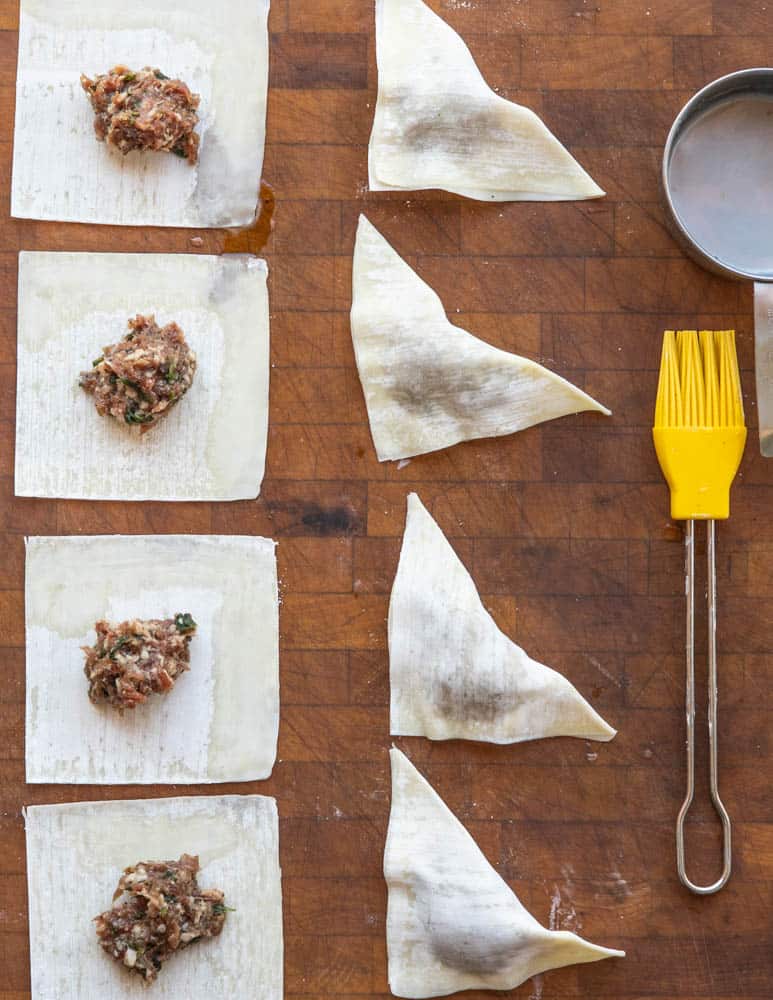
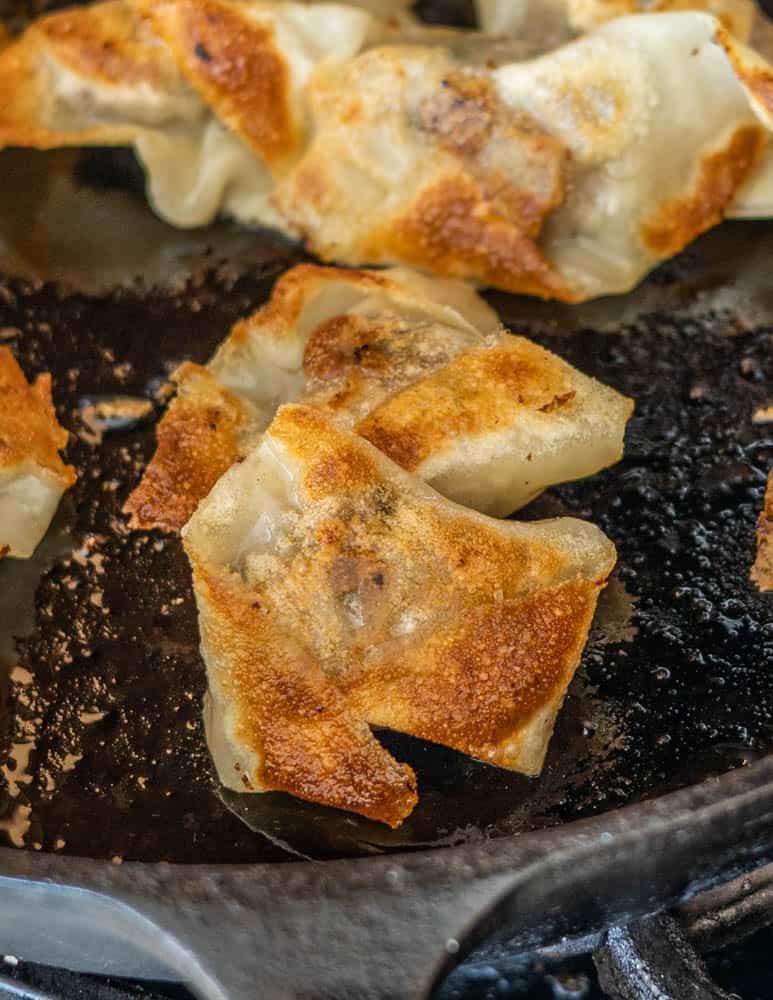
Sichuan Sausage Ingredients
Fish sauce
This forms a component of the salt, but not all of the salt, since it also adds water—just a little bit adds those umami-rich glutamates that helps make people say "This is so good, what's in it?!" . Red Boat brand fish sauce is the gold standard in restaurants, if you don't have some, I highly recommend it. Fun intro video from their homepage.
Hot chili
Szechuan peppercorns are one of the key components of the flavor Mala flavor combination in Szechuan cuisine, which translates to "hot-numb". Literally hot and numbing at the same time, it's a fascinating combination that makes your mouth water, sometimes profusely when used with a heavy hand. I'm addicted to it.
Fresh Grated Ginger
I love adding grated fresh ginger to sausages, it adds a tiny amount heat, and a more floral quality than powdered. You'll want a microplane grater to do this. It's also a great way to incorporate garlic into dish without making the cutting board smell.
Fresh herbs
Cilantro, culantro, and rau ram are perfect compliments here.
Touch of sugar
Just a little sweetness helps add a nice undertone and balance the fish sauce.
Spices
Just a little bit of spices help add interest. Wild spice bush berries and ground cloves both made excellent versions.
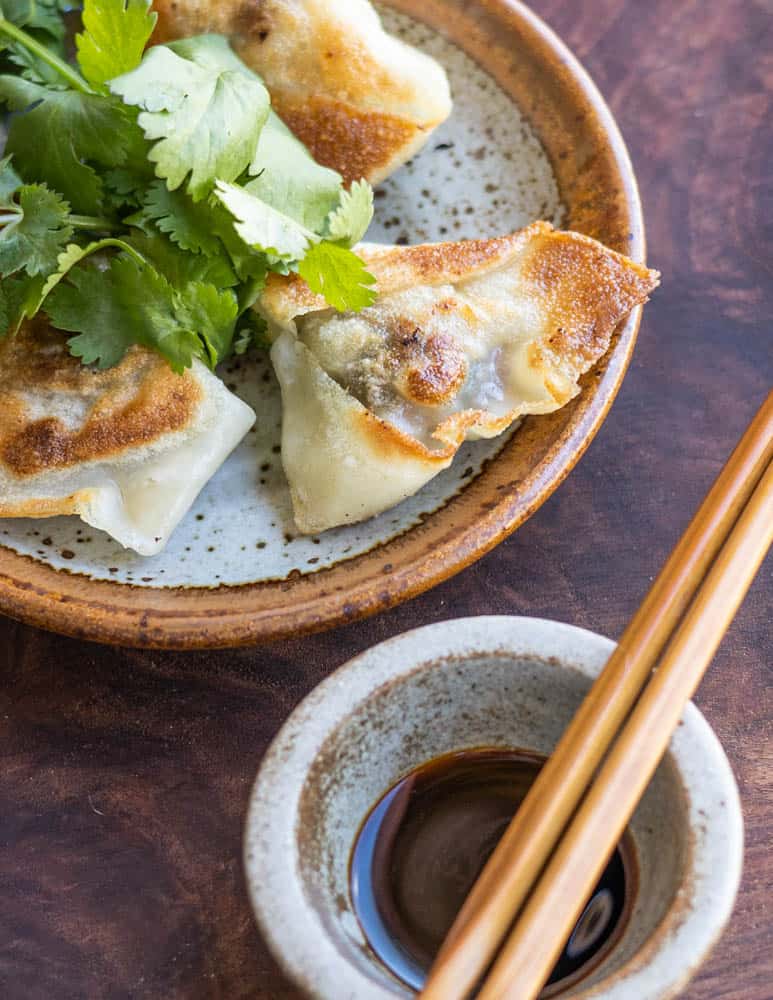
Prickly Ash Sichuan Sausage
Equipment
- 1 Medium mixing bowl
- 1 Sausage stuffer optional
- 1 Meat Grinder optional
Ingredients
- 2 lb ground goat lamb or pork
- 4 teaspoons ground dried prickly ash berries or Szechuan peppercorns Use half this amount if using commercial Szechuan peppercorns or if your peppercorns are very aromatic or red in color.
- 2 tablespoon fish sauce or soy sauce preferably Red Boat brand
- 1 teaspoon salt
- 1 teaspoon red pepper flakes or to taste, depending on your heat tolerance
- ¼ teaspoon freshly ground cloves, star anise or ½ teaspoon ground spicebush berries
- 2 teaspoon fresh ginger finely grated
- 2 small clove garlic finely grated (about ½ teaspoon)
- 2 teaspoon maple sugar or other sugar
- 2 Small handful of chopped fresh cilantro, culantro, or rau ram
Instructions
- In a mixing bowl, combine the meat mix with the remaining ingredients and mix thoroughly, then allow to rest overnight, which will allow the salt time to bond and activate the myosin in the meat which helps keep it moist.
- The sausage will keep for 3-4 days in the fridge.
Notes
Scaling
You can scale this up as needed, but adjust the salt down, aiming for about 1 % of the total weight of the meat when making larger batches (a great reason to have a kitchen scale).Nutrition
Prickly Ash Sausage Postickers
Ingredients
- 1 lb Prickly Ash Sausage See recipe
- 1 package pre-made wonton wrappers Look in the vegetable section of the grocery store near the tofu.
- Water, for brushing the wrappers
- Soy sauce, or another condiment like ponzu, for serving
Instructions
- Lay out the wonton wrappers, brush lightly with water, then put a generous teaspoon of sausage in the middle of each one.
- Close the wontons to make triangular packets, seal, and repeat until all the sausage is used.
- Unused wonton wrappers will keep in the fridge for weeks.
- To cook the wontons, bring a pot of lightly salted water to a boil, add the dumplings and cook for 30 seconds or so, just until they float, then immediately remove with a strainer or slotted spoon to drain.
- From here, ideally you'll cook the dumplings straight-away, but you can toss them with oil and keep them in the fridge for a day or two, separated with parchment or on a cookie sheet, not touching to prevent them sticking.
- To finish and serve, brown the blanched dumplings in a pan with some flavorless cooking oil until browned (one side only is fine) then serve. They can also be deep or shallow fried.

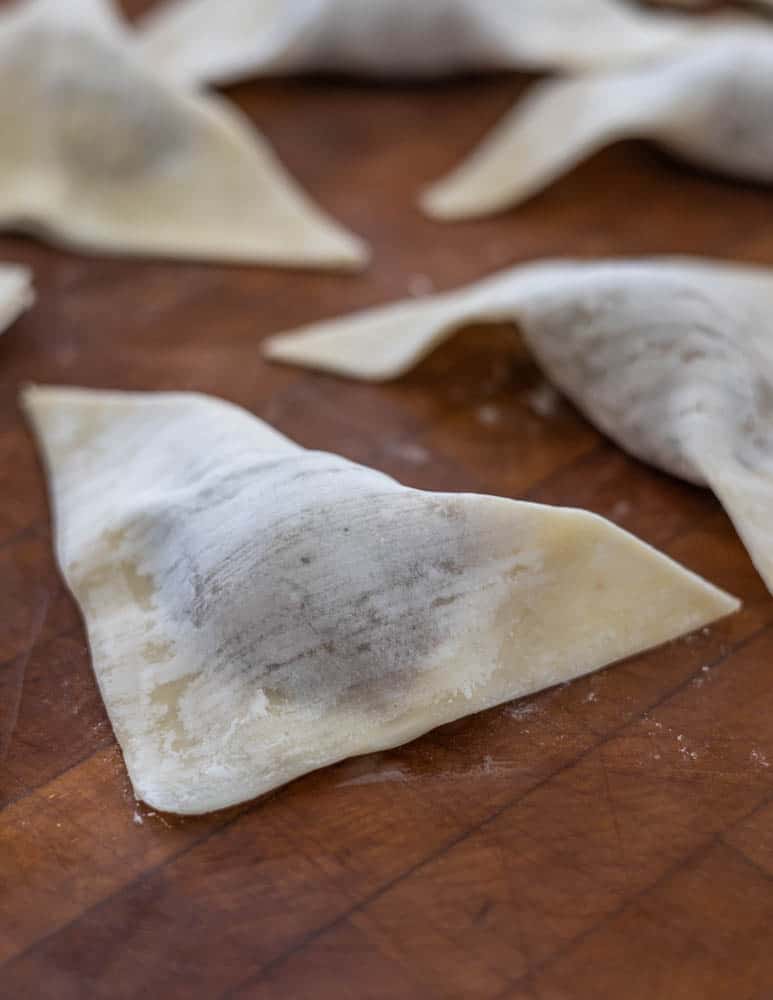
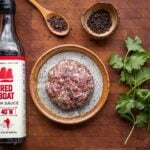

Jake Daws
Would beef work in this recipe?
Alan Bergo
Hi Jake, yes, but I would consider cooking it medium-medium rare as most ground beef is quite lean.
Kathryn Teresa
I grew up in Minnesota and remember sitting out in the fall sunshine sucking on prickly ash berries. I have never forgotten the numbness on my lips and the biting flavor. I had no idea that Szechuan pepper was a Xanthoxylum sp. What a flood of memories this brings.
Alan Bergo
Yes, It's fascinating. We have X. americanum, the most widely used(sold) Asiatic species I know of is X. bungeanum.
Carla Beaudet
I made these last night; unfortunately I had no foraged prickly ash berries, but 1 tsp. of Szechuan peppercorns was fine. I was tempted to use 2 tsps. with my 1 lb. of ground pork, but glad I exercised restraint and followed your guidelines. The result, just as you wrote it, is a really well-balanced symphony of flavor. I made the wontons, and there is just one thing I would change about that recipe. For folks like me who don't make potstickers all that often and forget how badly these things like to stick together, in step 5 of the instructions, where you say "toss the dumplings with oil and keep them in the fridge", could you change that to "toss the dumplings with oil and keep them in the fridge in single layers separated by parchment or wax paper"? For some reason, I hoped against hope that the oil would be enough, and let them pile up in the storage container. So sad after all that work to watch the wrappers tear as you separate them.
Alan Bergo
Oh Carla I'm so sorry. Yes, when I say keep them in the fridge, separated is what I meant, but didn't type. I changed that. Thanks for letting me know. The devils in the details.